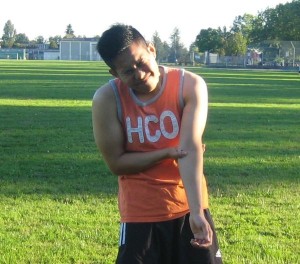Sports that involve overhand throwing places high stress on the elbow. The stress on the elbow is continuous in some sports and can eventually lead to serious overuse injury. Unlike with an acute injury that occurs from a collision or fall, an overuse injury develops gradually over time. In most cases, overuse injuries can develop when a particular movement is repeated continuously during single periods of play and when these are frequent in which the body does not have enough time to rest and heal. Even though throwing injuries of the elbow typically occur among pitchers, it can also occur in any athlete who engages in repetitive overhand throwing.
Common throwing injuries of the elbow
When athletes engage in sports that involve repeated throwing at high speed, the stress can lead to various overuse injuries. The issues most often start at the interior of the elbow since substantial force is focused on the inner elbow while throwing.

- Flexor tendinitis occurs when the flexor/pronator tendons are irritated and swollen. There is pain in the interior of the elbow when throwing and if it is a severe case, the pain can also occur while at rest.
- Valgus extension overload involves wearing away of the protective cartilage on the olecranon and abnormal growth of the bone. This occurs once the elbow and humerus bones are twisted and forced against each other. There is pain and swelling at the site of the contact between the bones.
- Ulnar collateral ligament injury is the most prevalent injury among throwers. It can range from minor injury and inflammation or a full tear of the ligament. It can cause pain on the interior of the elbow and a diminished velocity while throwing.
- Olecranon stress fractures occur when the muscles are fatigued and unable to absorb excess shock. The fatigued muscles transfer the added stress to the bone, which results to a small-sized crack.
- Ulnar neuritis involves pain that is similar to an electric shock that starts in the inner elbow and runs along the nerve as it passes through the forearm. There is tingling, numbness or pain in the small and ring fingers that can occur during or immediately after throwing and might also persist during periods of rest.
What are the causes?
Throwing injuries of the elbow usually occur due to overuse and constant stress. In most cases, the pain can subside once throwing is stopped. It is uncommon for most of these injuries to occur among non-throwers.
In baseball, the injury rate is higher. The tall and heavy pitchers, those who throw with higher velocity and those who take part in showcases face a higher risk for injuries. In addition, those who throw with arm pain or while fatigued face the highest risk.
What are the symptoms?
Most of these throwing injuries of the elbow initially cause pain during or after throwing. These can often limit the ability of the individual to throw or reduce the throwing velocity. When it comes to ulnar neuritis, the individual can experience tingling or numbness that affects the elbow, forearm or hand. To learn to recognize and manage elbow injuries, sign up for first aid training here.
